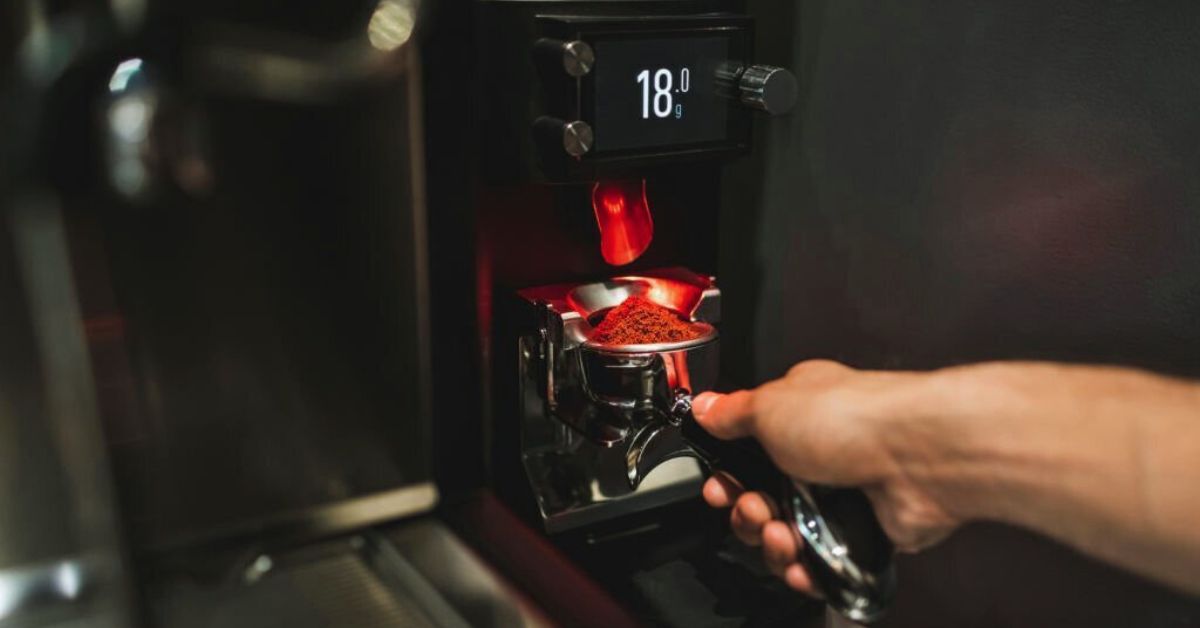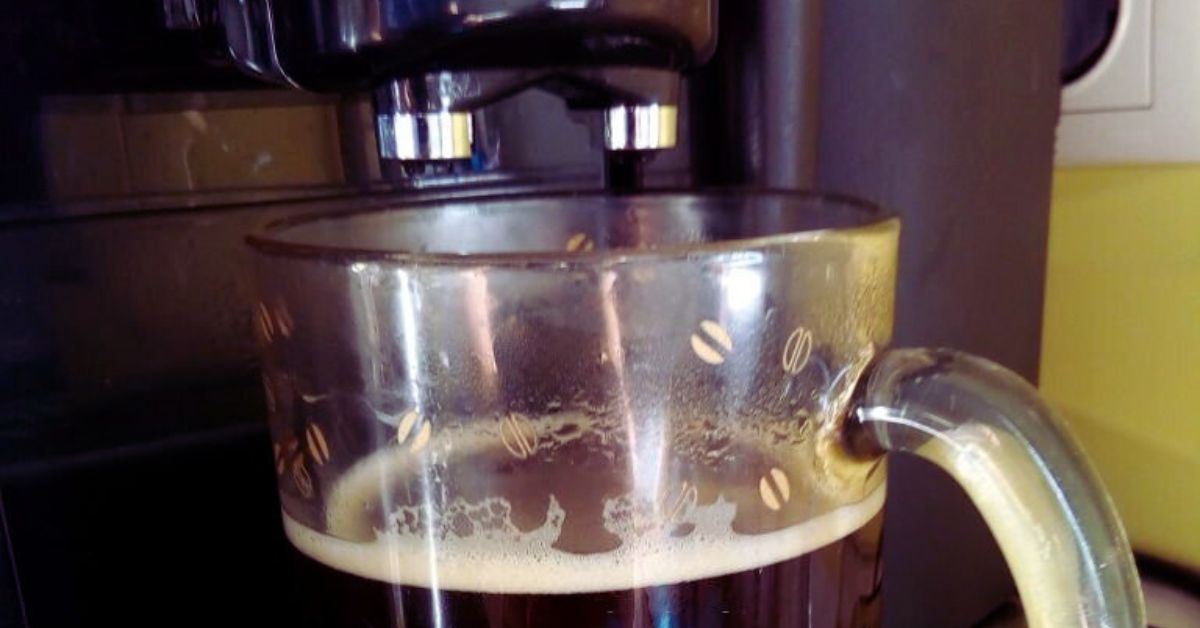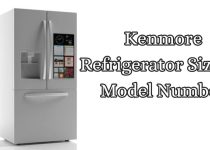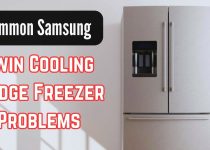5 Common GE Café Refrigerator Problems & Solutions| Maintenance Tips
GE Café is a qualified brand best known for producing promising quality appliances for home and kitchen. They say they have a century of experience in design, inventing, and modeling new and modern tastes.
However, that doesn’t mean GE Café produces ever-lasting products, there may appear any damage to a particular part which can make you rush to technicians or appliance engineers to kick the problem.
But rather to make you spend time and money, if you have come across an unusual refrigeration cycle, we are here to make you familiar with the self-troubleshooting and how to fix the GE Café refrigerator problems at home.
There can be numerous problems with GE Café refrigerators like ice-making issues, water dispenser problems, unnecessary leaking or dripping, etc. Let’s have a closer at each separately.
Common Problems with GE Café Refrigerator
1. GE Cafe Refrigerator Temperature Control Problems
Inconsistent cooling or freezing
Temperature control problem in a refrigerator leads to improper or no cooling of the food inside. In some cases, you may get to face the expired food since of not receiving the proper cooling to stay healthy and longer.
The issue cannot always be fixed by adjusting the temperature control knobs, there are certain other areas which GE Café suggests to inspect properly.
Troubleshooting and Solution
As the foremost step, note the time passed since you have installed the GE refrigerator. It always starts cooling after 24 hours of installation. The other inspection includes checking out the door gaskets if they are sealed properly and are not leaving the door partially opened.
The tall and large food items at the back can also contribute to the temperature control problem, replace them with small items while large items at the front.
Moreover, the refrigerator installation area is also considered a hurdle in maintaining a required cool temperature. Make sure your GE refrigerator is installed in an environment of 60 to 110 Fahrenheit.
Lastly, check out the refrigerator lights if they don’t get turned off when the door is 1 inch to closing then they are most likely to produce heat inside rather maintaining a cool environment.
Inaccurate temperature readings
Sometimes the refrigerator is not worn out with any of the above problems rather the control panel shows inaccurate temperature readings.
The simplest solution is using a diagnostic mode. It can be turned ON by pressing the ‘ice off’ and ‘energy saver’ pads for at least three seconds. The control panel will flash and the error code will appear, which will need to be diagnosed and fixed accordingly.
2. GE Cafe Refrigerator Ice Maker Not Producing Ice
There can be two scenarios, either there is no ice production in your GE refrigerator or the ice output is less than satisfied. Both situations require different solutions to get rid of the problem, let’s have a look;

No ice production
If you have just installed the GE refrigerator don’t expect the ice in the first 24 hours. After this duration, if you still notice no ice production then the ice maker must be malfunctioned.
Troubleshooting and Solution
For a self-troubleshoot, check the temperature settings of the freezer. The recommended temperature for the freezer is 0 degrees F while for the fresh food is 37 degrees F. The ice maker must touch the temperature of 16 degrees F before the beginning of a cycle.
Ice production also depends on the quantity of food in the freezer. A low food load means less ice. Ensure a minimum ¾ quantity of food in the freezer.
Furthermore, the clogged filter could be another cause of no ice production in the GE refrigerator. It blocks the entrance of water to the ice maker. Also if you have installed the refrigerator near the construction area then the sediments will be making the filter clogged. It is suggested to replace the filter after every 6 months, you can purchase the new part from GE online store.
Slow ice production
Slow ice production relates to low ice output even after a long time.
Troubleshooting and Solution
The problem might be appearing due to irregular or low water pressure. Make sure that the water pressure is not less than 40 psi. If the water pressure is good then try replacing the saddle valve.
3. GE Cafe Refrigerator Water Dispenser Not Working
Having crushed ice and water immediately in a glass helps best to stay cool on hot days. The headache appears when the water dispenser get malfunctioned giving no or dripping water.
No water dispensing
Look for the following suggestions and solutions if there is no water in the dispenser.
Troubleshooting and Solution
Check out the main water supply line if the water flow is not affected. Also, check the saddle valve and properly turn the valve ON.
The clogged water filter, if your refrigerator model has one, will resist the flow of water from the dispenser. As stated before, change the water filter after every 6 months. When the new filter is installed, press the dispenser cradle and wait for at least 5 min so that the air is out from the water line.
A frozen water tank, located behind the vegetable bins, can also be responsible for no water dispensing.
Leaking or dripping water
Leaking water from the dispenser can be more messy than no water dispensing.
Troubleshooting and Solution
This issue can be resolved similarly to the way when there is no water from the dispenser. Clean the filter if it is even partially clogged. Also, the frozen water tank when split or cracked often leaks. Try not to load a load in the food section since the method of food loading affects the cold air circulations.
4. GE Cafe Refrigerator Noise Issues
If the GE Café refrigerator is producing noise or an unfamiliar sound then it’s time to figure out the part which is causing the problem. Different types of sounds can be heard in normal operations, while every sound points towards the specific defective part of the refrigerator.
Troubleshooting and Solution
Check fan blade: when you hear a noise that the fan blade is hitting something or something is interfering with the working of a fan, then it’s time to troubleshoot this section.
Turn off the refrigerator and reach out to the fan unit. Remove the fan and move the blades manually to check if they are moving smoothly. If any interference is found remove it and place the fan in its unit. Turn ON the power and check the if noise is gone, otherwise, we recommend approaching GE Appliance Service.
Check water supply line: when the water supply line creates an issue, a buzzing sound is produced for 5 to 10 sec after every 10 to 15 min. It happens when the water is not reaching the ice maker, and may be turned off. It is suggested to first turn off the ice maker and check the flow of water into it.
Also with time, some mineral deposits on the water inlet valve block the required flow of water into the ice maker, which results in a noisy operation. The issue can be resolved by locating the water inlet valve and replacing it with a new one.
Check the compressor: the other component that is most likely to be contributing to noisy fridge operation is the compressor. There might be any damaged part in the compressor that needs to be fixed immediately.
If you are not a professional then stay away from fixing and replacing the part on your own. Better consult an engineer and replace the compressor.
Check the drain pan: if you notice a rattling sound coming from the bottom of the fridge then it’s time to check the drain pan. The drain pan is responsible for collecting the water from the defrost which then evaporates into the surrounding.
It creates a loud noise when the part that secures the drip pan gets loose. To stop the sound try to tighten that part. Use your GE refrigerator manual to locate the drip pan, however usually for every model they are located at the bottom of the fridge which can be accessed by removing the kick panel or trying locating it from the back of the refrigerator.
5. GE Cafe Refrigerator Defrosting and Frost Buildup
There can be many reasons why your GE refrigerator has a Frost buildup. Normally, it is created when the warm air in the freezer gets converted into frozen water and occupies the space on walls and shelves. However, the frost doesn’t create any technical issues with the refrigerator but offers less space to store the food in the freezer.

Troubleshooting and Solution
To throw out the defrost problem we will be suggesting multiple refrigerator areas to troubleshoot, but before make sure the water supply and electric supply is off to the refrigerator.
Check defrost thermostat: defrost thermostat in a refrigerator turns the defrost cycle off when it senses too warm temperature inside the freezer. If you notice a frost buildup it means the thermostat must be malfunctioned and is not sending power to the heater.
For troubleshooting, take out the thermostat, which is normally located at the back of the refrigerator, and make sure the freezer is at 0 degrees F. Now test the continuity of the part using a multimeter, when it is in the cold state. If found defective replace the thermostat.
Check defrost timer: defrost timer is responsible for turning off the compressor to avoid frost buildup in the freezer. A faulty defrost timer could be another reason for a frost in the GE refrigerator which needs to be replaced immediately. To check if it’s working, locate its position and mark a point at its shaft. If the mark doesn’t move after a few minutes it means the defrost needs to be replaced.
Check defrost heater: defrost heater is the part that heats up to melt the ice on the evaporator. They are generally located at the back of the freezer otherwise check your GE model manual to find its position.
To check its working take the multimeter and test the continuity. If found defective order a new defrost heater to avoid frost buildup in the future.
Check the freezer door gasket: the door gasket keeps the freezer cold and keeps the warm air out. If the seal is dirty and deformed the moisture enters the freezer and results in frost buildup over time.
Clean the gaskets if dirty otherwise, replace the sealing when it is worn out with cracks and damages so that the freezer is closed properly after every use.
Check the ice dispenser chute door: when the dispenser arm is pressed, the ice dispenser opens up and sends the ice out of the dispenser. If the ice dispenser door is damaged, the sealing to the freezer gets affected which results in the mixing of warm and cold air and frost is buildup.
Therefore, it is essential to check for any damage to the door which is usually located behind the control board of the GE refrigerator.
Seeking Professional Help
Without a doubt, self-troubleshooting and repair help saves money and time rather than approaching a technician. However, not every attempt at DIY troubleshooting gets successful.
There may be a case when you feel unable to reach the water dispenser or the drain pan gets damaged while taking it out. In such a case, you need to stay ready to seek a professional.
For GE Café refrigerator problems it is ideal only to contact the GE technicians to resolve the problem. On the other hand, if you are successfully done with the self-troubleshooting and the damaged part needs to be replaced, visit the GE appliances online store and order the part.
Preventive Maintenance Tips for GE Café Refrigerator
Without a doubt, kitchen appliances are reaching the top prices in the market mainly when it comes to purchasing a necessary appliance like a refrigerator. And costly investments require the most part proper care and maintenance. Let’s discuss some useful tips on how you can prevent your GE refrigerator parts from damage and keep the appliance live longer in your kitchen;
Clean the Door Sealing
The door gaskets and sealing works best to keep the cold air in and warm air out. When they become dirty or deform the door doesn’t properly get close which makes the food inside affected badly by warm air.
Therefore, check the door gaskets from time to time. Clean them when you see debris and crumbs, however, the deformed gaskets might require you to replace them for airtight sealing.
Proper Food Storage and Organization
How the food is stored inside states how efficiently the refrigerator is working. Food storage is considered the most essential maintenance however, most people never bother to learn this tip which makes them face fridge problems in the future.
For an effective refrigerator performance, it is essential to have at least 1/3 to 1/2 of the food inside. In this quantity of items cold air circulation remains stable and balanced in the refrigerator.
With that in mind, avoid placing the items in the way of air circulation. If the freezer or fridge compartment is overloaded or the items are placed close to air vents, the air circulation will be blocked keeping the food deprived of the cold air.
Clean the Condenser Coils
Condenser coils are responsible for circulating cold air in a refrigerator and the heat is released through them. If condenser coils are dirty they won’t get able to release the heat properly which likewise lowers the performance and life of the refrigerator.
It is suggested to clean the coils once every six months. Depending on your GE refrigerator model condenser coils could be on the back or in the bottom of the refrigerator.
Check the Drip Pan
In a refrigerator, as the freezer makes ice the condensation process begins which throws the heat and the water droplets into the drip pan. The drip pan of an efficient refrigerator often stays dry or collects less water to dispose of.
However, if you need to clean pan the drip constantly then it is time to consult a technician to diagnose the problem in your refrigerator. If you don’t find a need to replace the pan then washing it with bleach would best help to kill the bacteria and stubborn dirt.
Final Words
Kitchen accessories, especially refrigerator is not considered easy appliance to maintain for years, even if it belongs to a well-known brand like GE Café. Therefore, regular care and maintenance are always required to keep the investment safe and healthy.
However, if your GE refrigerator gets worn out with any part then we hope to have provided a comprehensive guide on the GE Café refrigerator problems and how to self-troubleshoot and resolve them with no service cost.
If there exists an issue that you feel unable to fix then seeking professional help would be the ultimate decision to save the appliance from further damage.

